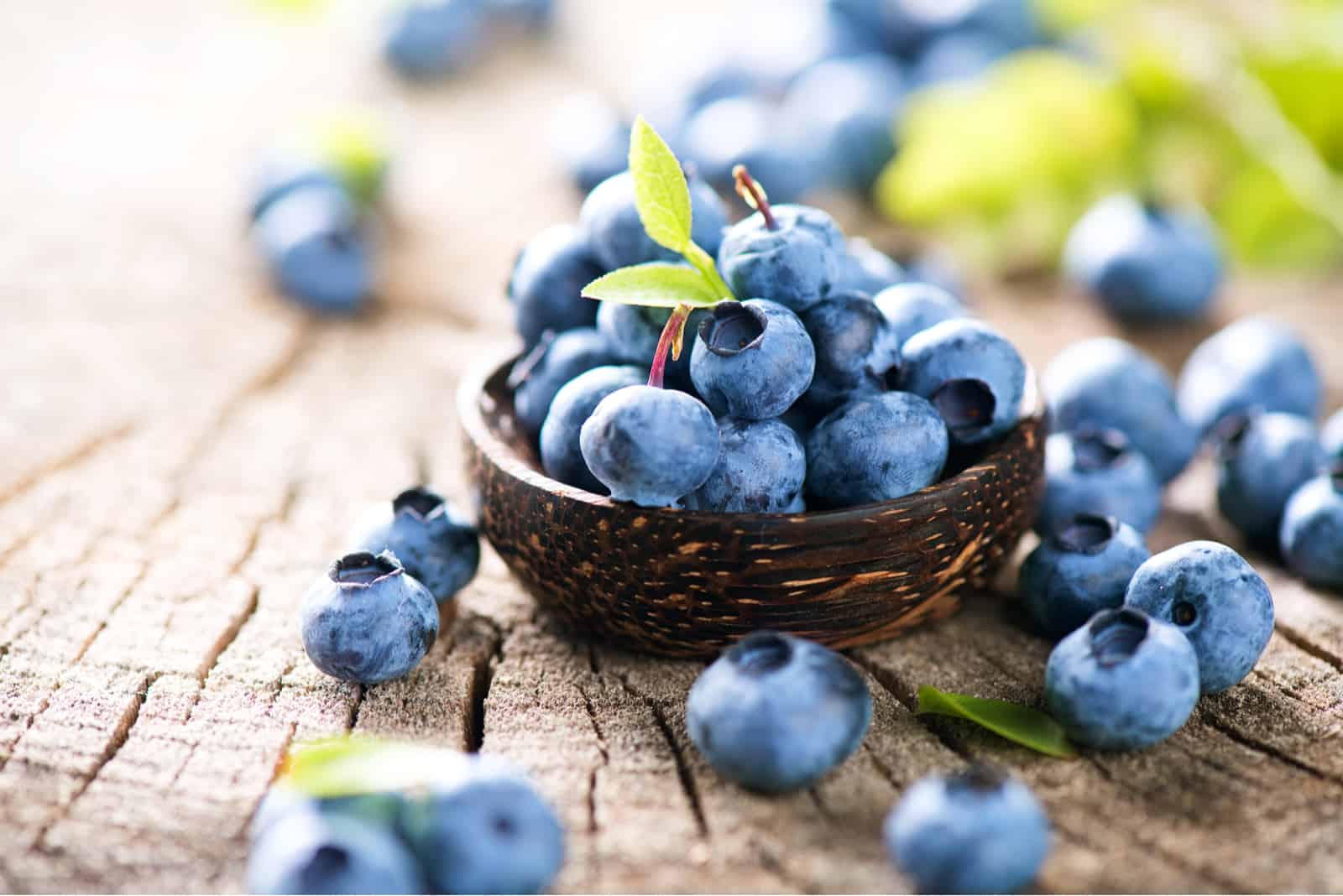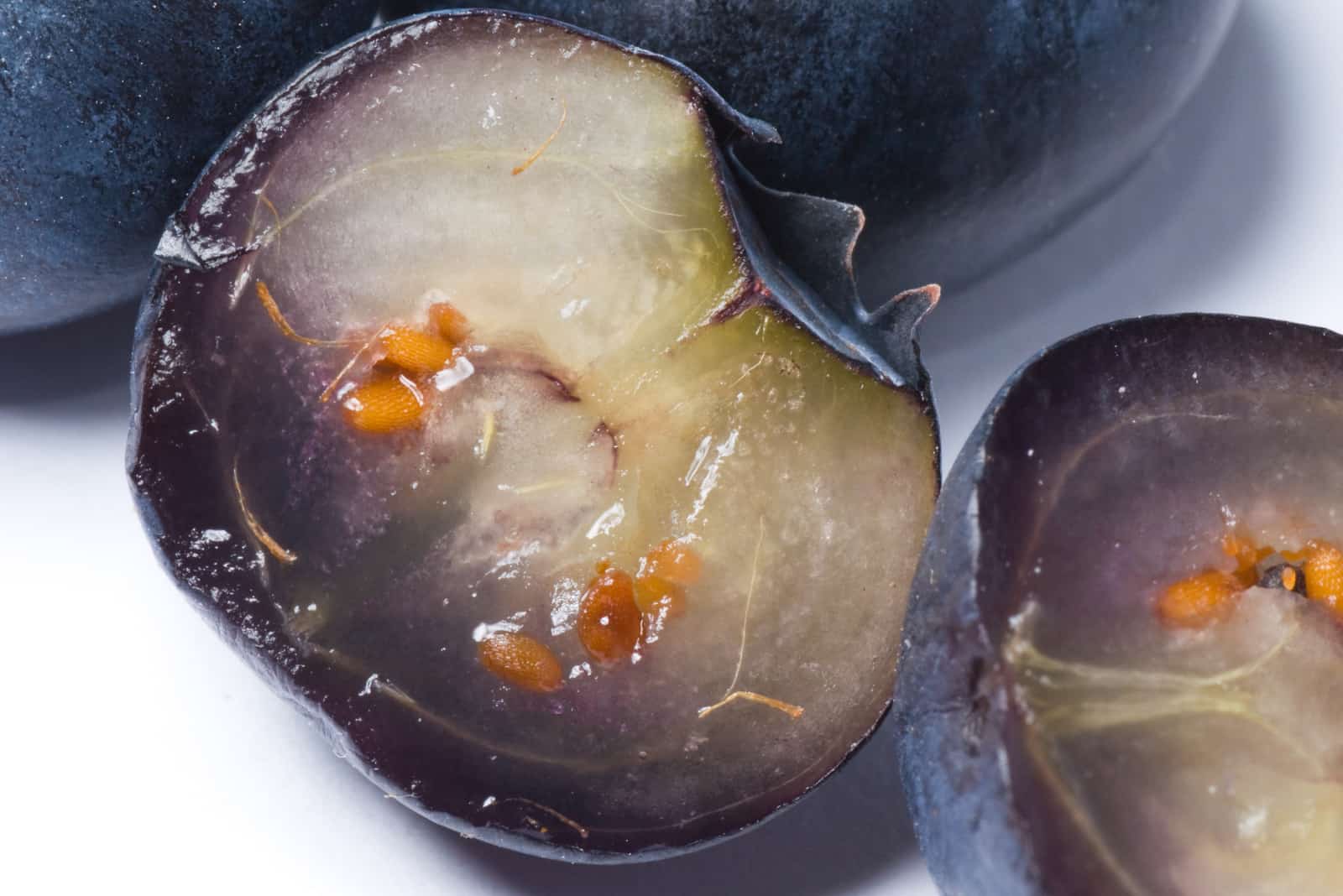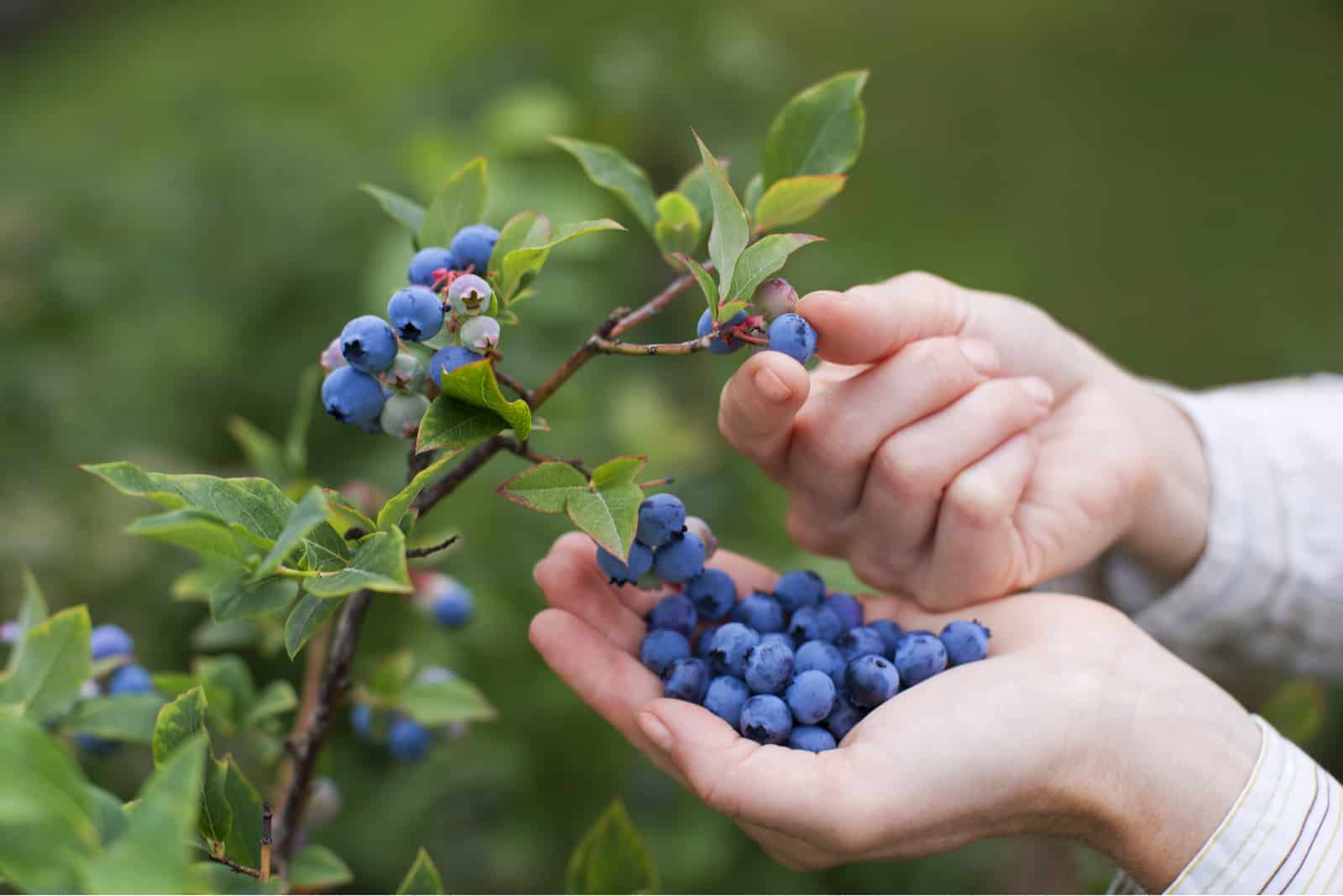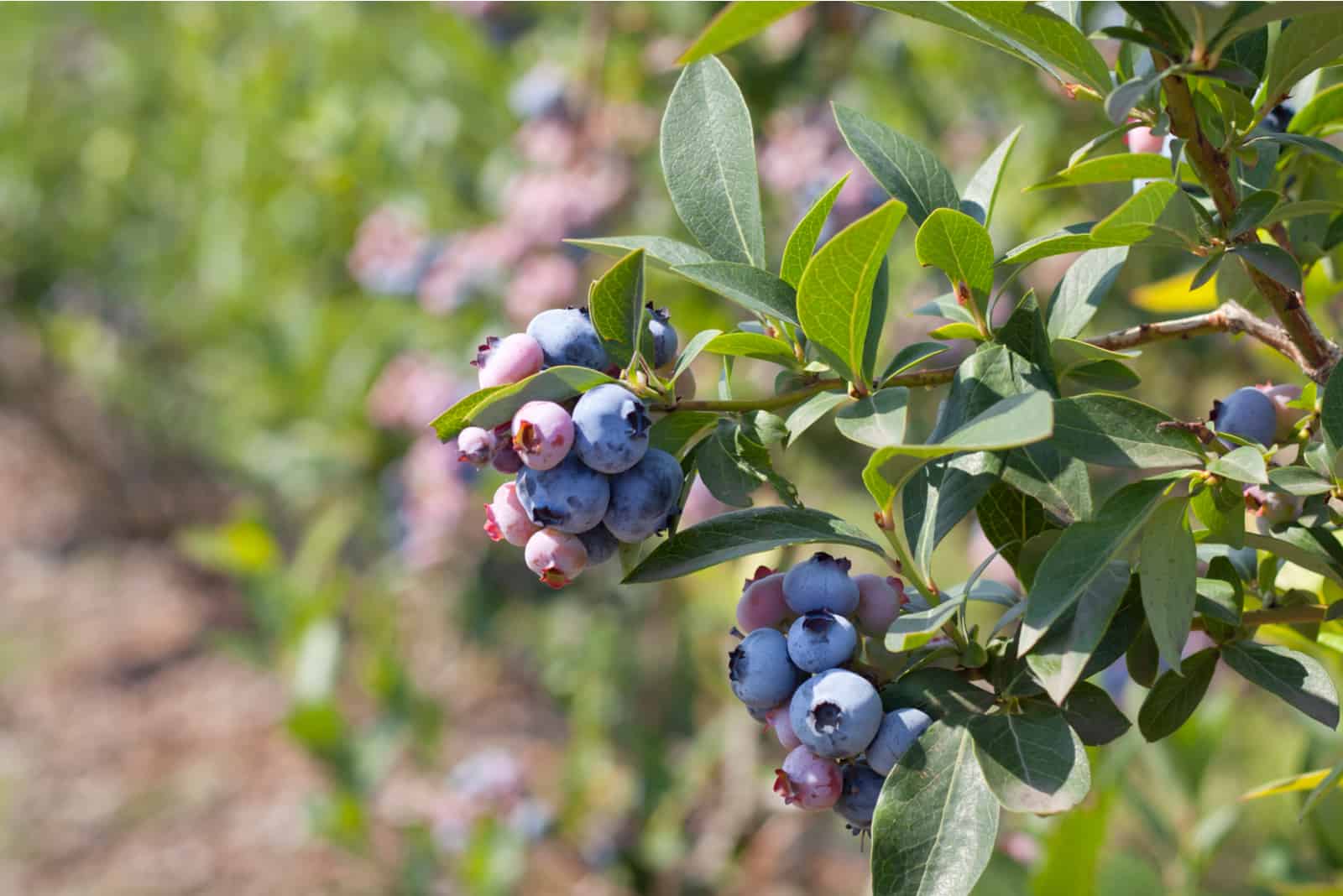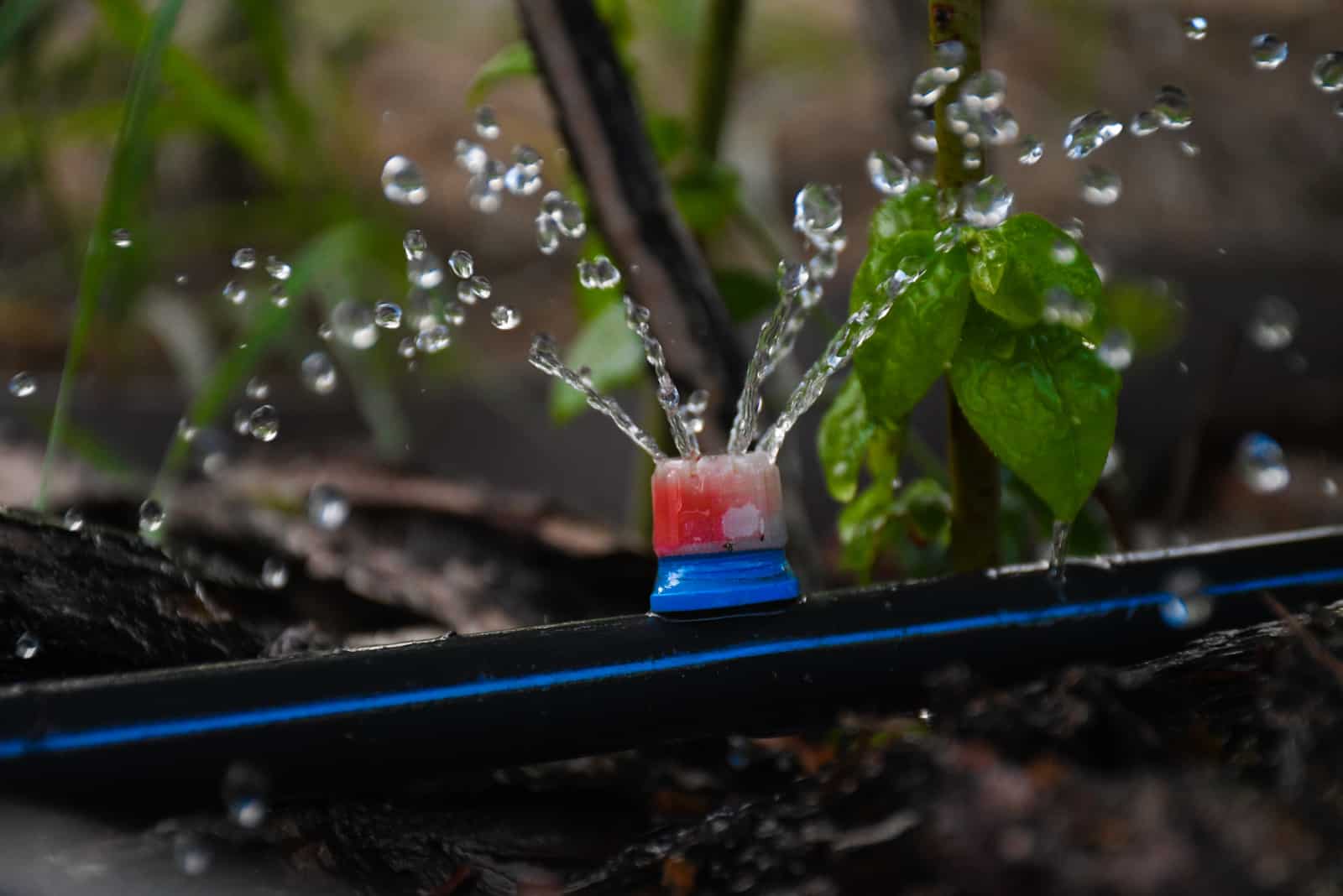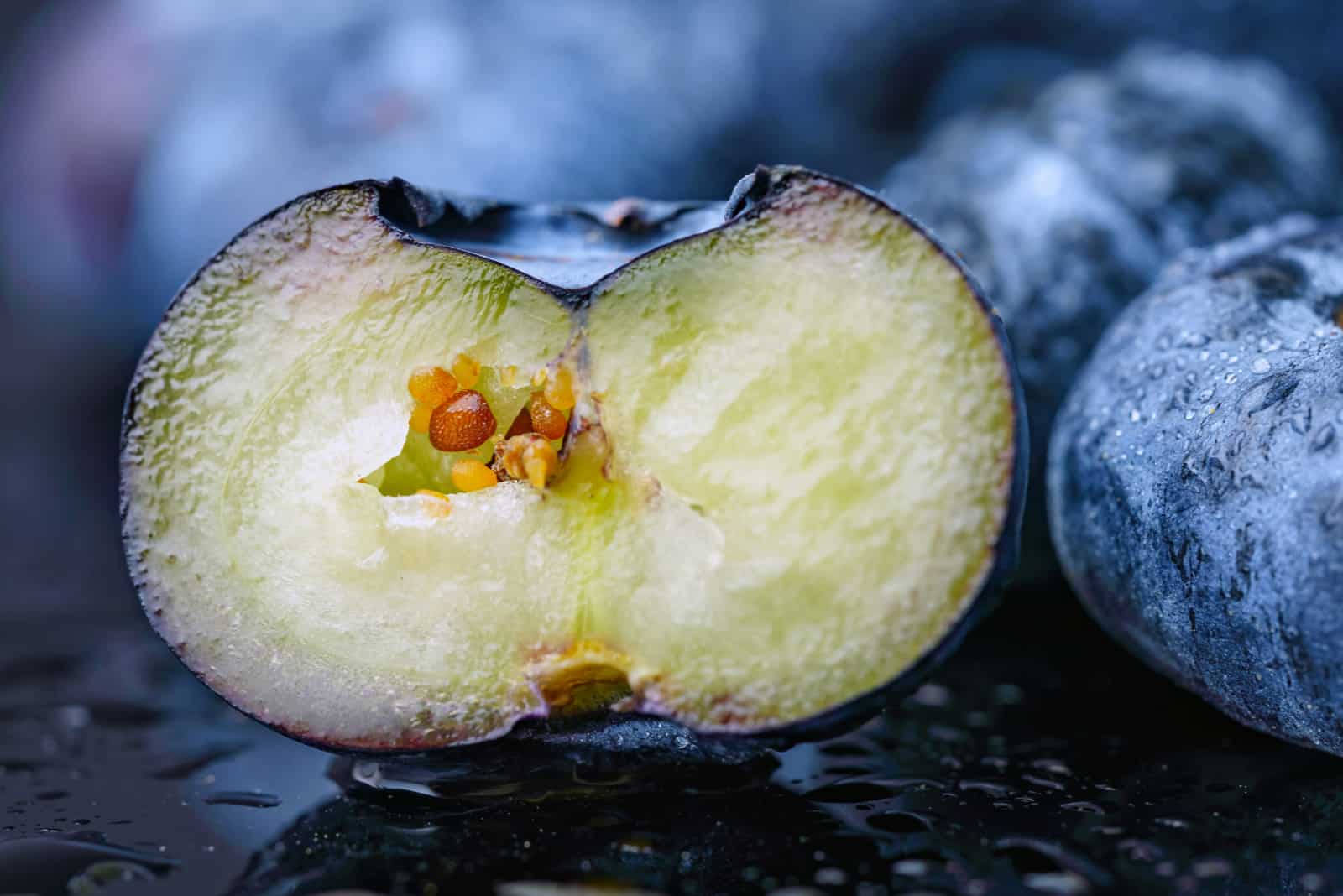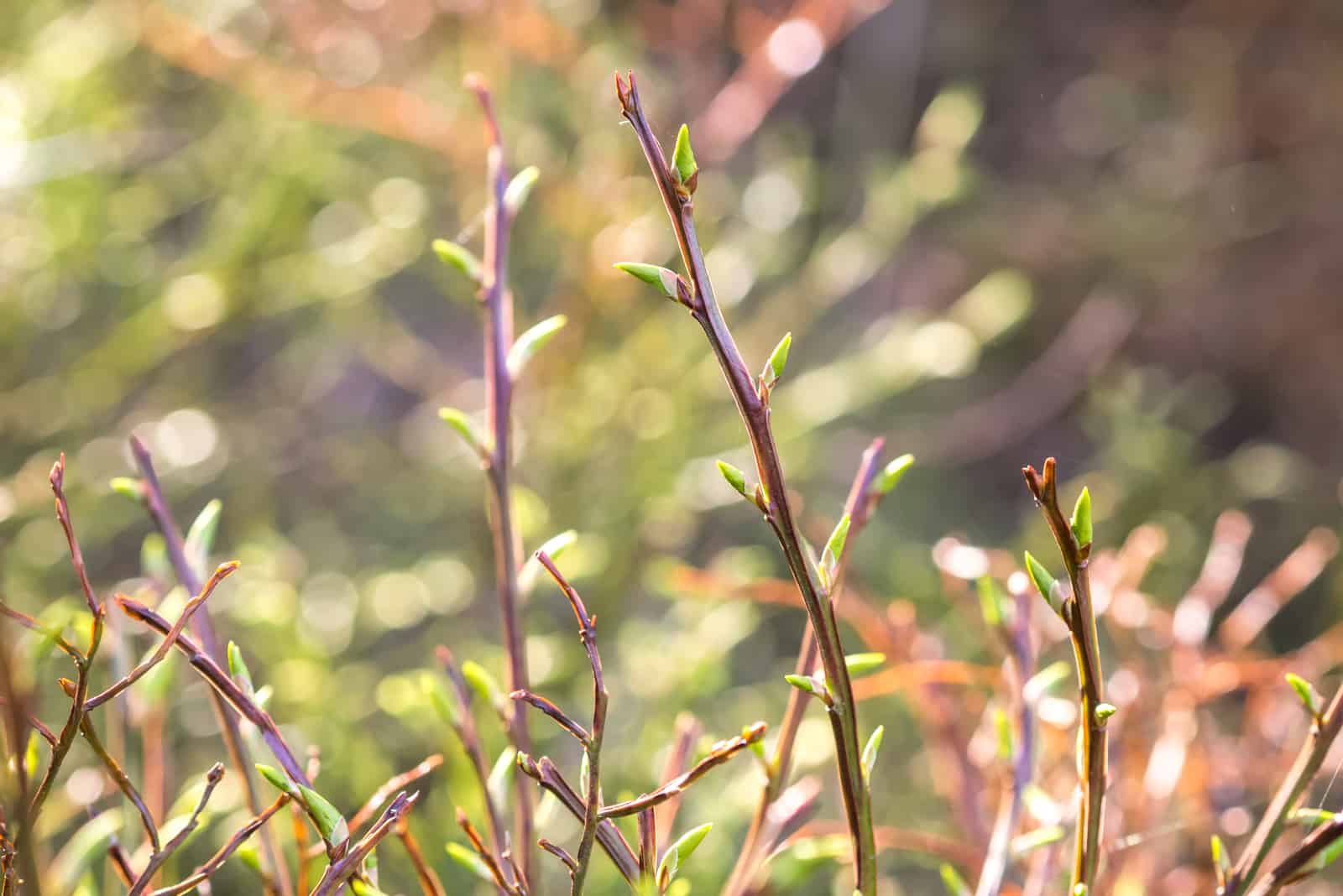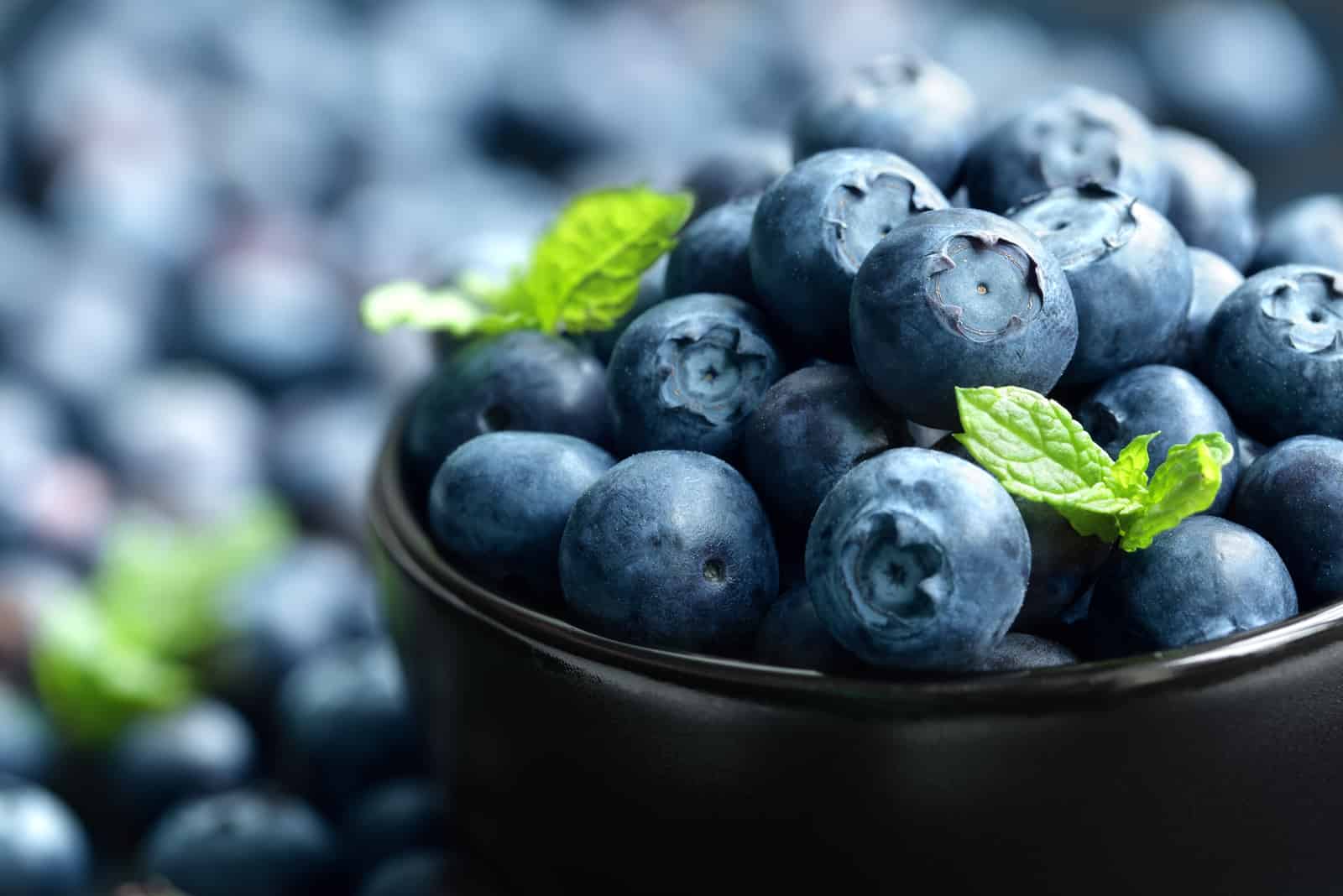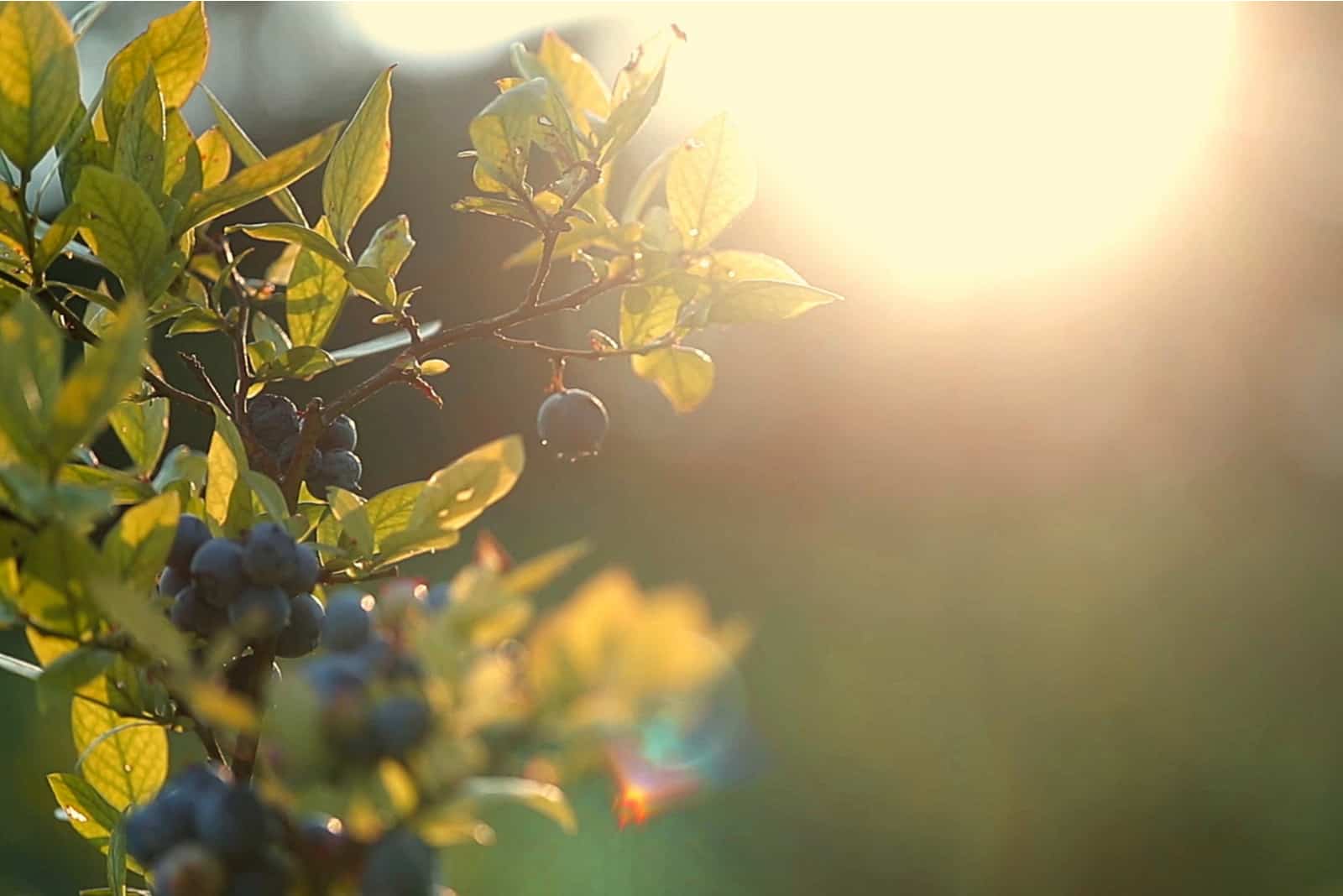Blueberries are indeed a delicious treat. They are very famous, not only in the culinary world but also in botany.
As far as the culinary world is concerned, blueberries have a high nutritional value.
Blueberries belong to berries in the botanical sense, and other botanical plants include tomatoes, grapes, and cucumbers.
The genus to which blueberries belong is Vaccinium. Some other plants that belong to the Vaccinium genus are bilberries, blackberries, cranberries, and raspberries.
I’m a fan of berries in general, but blueberries stand out. While I was eating some fruit muffins, I looked at the blueberries and asked myself, “do blueberries have seeds?”
I’ve got the answer (you’ll find out how), and now I want to share it with you.
Keep reading and find out the answer to the question “do blueberries have seeds?”. We will also provide you with some other information connected to blueberry plants.
Let’s start!
Do Blueberries Have Seeds?
Blueberries are miniature, so people think the blueberries are seeds themselves.
They are not seeds themselves, but blueberries contain seeds. The seeds, as in the majority of berries, are within the blueberry.
There is one reason why blueberry fruit is mistaken for blueberry seeds. When you eat a blueberry, you ingest the entire berry.
The seeds are tiny and, like blueberries themselves, are very soft.
Just because you don’t quickly notice tiny seeds doesn’t mean they aren’t there.
You can only notice the seed once the blueberry fully ripens.
The Features Of Blueberry Plants
These plants are among the healthiest fruits that exist. Most growers plant blueberries due to their high nutritional value.
It’sIt’s not strange that these plants are called a superfood. Blueberry plants contain a lot of vitamins, especially vitamin C. I am sure that you’ve already heard about their antioxidant features.
Even the seeds are rich in vitamin C, vitamin K, and fiber.
There are carbs in the blueberries, but the percentage is low—only 14%. The plants are 84% water, which makes the carbs negligible.
Protein and fat percentages are also low, which makes the plant beneficial.
This type of berry is also rich in fiber, so you can consume the plant to improve your health.
The high amount of vitamins and minerals will also improve skin health and prevent blood clotting.
Blueberries contain magnesium, which is crucial for the production of amino acids.
These dark purple plants are both tasty and healthy.
Types Of Blueberry Plants
There are two types of these plants: lowbush blueberries and highbush blueberries.
The blueberries you see on the shelves of supermarkets are highbush, and they are commercially grown.
Lowbush blueberries, on the other hand, are mostly grown on farms. The plants are naturally grown in wild meadows—mainly in North America.
Andean blueberries (wild berries) are available everywhere, especially in Australia.
Growing blueberries in your garden will depend on the climate you live in.
How To Grow Blueberries—The Requirements
Each plant needs good care, and there are a lot of requirements to meet. Light has to be adjusted, as well as the watering schedule. Choosing the right type of soil and mulch will also help your plant thrive.
Light Requirements
Some places in your garden are more exposed to the sun, and as blueberries love the sun, make sure to put them in those places.
Blueberries aren’t overexposed to the full sun. In their natural habitat, blueberries don’t receive much sun. When grown outside our homes, they will thrive best if placed in a sunny spot.
Good lighting will help their evergreen leaves to stand out.
Soil Requirements
Peat moss-based soil is perfect for planting. As peat moss-based soil holds a good moisture level, your plant won’t suffer dehydration.
It will also ensure a good drainage level to prevent overwatering.
If you decide to grow the plant in a pot first, add sphagnum peat moss.
Many growers cultivate blueberries hydroponically.
The Level Of Acid
The acidic soil plays a very significant role in blueberry growth. The perfect pH level for blueberry plant soil ranges from 4 to 5.
If you are not sure about the pH level in your garden, you can use a pH test tool, which is available in supermarkets.
If the test shows a pH level out of optimal range, you can use sulfur pellets.
Don’t worry—it’s an organic element, and it’s safe compared to different commercial products.
If you decide not to use sulfur pellets, you can stick to peat moss.
Watering Schedule
When growing blueberries, pay close attention to watering—this especially applies to the first two years.
Blueberries need watering often when they are in the fruiting stage.
You can also install a drip system to avoid dehydration. Make sure it’s well functioning.
Mulch Type
The perfect mulch for blueberry plants consists of:
• Pine needles
• Sawdust
• Wood-shavings or
• Shredded fall leaves
Using these ingredients, mulch blueberries about 3 inches deep.
You can use mulch for weed growth reduction, improvement of health, increased fertility, and moisture retention.
Apply mulch to the bare soil (before planting) or around the existing plants.
Protection
Due to their beautiful looks and delicious taste, blueberries often attract birds.
You can use a net to protect blueberries from unwanted guests. Cover blueberries during harvesting or growing season. The netted gazebo will work well—it can cover 140 quarts of highbush blueberry shrubs.
The net should have strong nylon to repel birds.
How To Prune Blueberries
Growers shouldn’t trim blueberry plants during early growth phases.
Prune the old stems during winter and leave young or middle-aged ones.
This method will sustain the production especially if the blueberries are grown as fruit vines.
Pay attention to the mulch when you plant for the first time if it needs replenishment.
Leaf drop is an indicator of inadequate mulch. In this case, add nitrogen using soybean meals.
Check out the video on pruning blueberries:
How Do You Get Seeds Out Of Blueberries?
Although this may sound impossible, you can extract the blueberry seeds and prepare them for propagation.
There are three methods by which you can pull the seeds out of the pulp.
Keep reading to find out more.
Grinding
To get seeds out of blueberries, you can use a food grinder. Put them into the food grinder and wait until blueberries become fully ground.
Put the ground blueberries in a jar and pour water over them.
After this, you will notice the blueberry seeds at the bottom of the jar. Repeat the procedure with a food grinder a few times until only the seeds remain in the jar.
Mashing
For this method, you will need a potato masher.
Put half a cup of blueberries in a bowl and mash them. Place the mashed blueberries into a jar and pour water over them.
After this, you will notice the blueberry seeds at the bottom of the jar. Repeat the procedure a few times until only the seeds stay in the jar.
Place the seeds onto a paper towel to rest.
Blending
For this method, you will need a blender. Blend the blueberries for about 10 seconds until they become liquid.
Again, you will notice the blueberry seeds at the bottom of the jar. Repeat the procedure with the blender a few times until only the seeds stay in the jar.
Put the seeds onto a paper towel to rest.
Germination
After you extract the seeds, leave them to drain. Draining your blueberry seeds will improve the germination rate.
The germination lasts for about 2 to 6 weeks. Sometimes, germination can last longer, up to three months.
You will undoubtedly get more delicious blueberry plants if you correctly extract the seeds and let them dry.
How to Plant The Seeds?
After germination, it’s time to put the seedlings into the soil.
The best soil option is an ericaceous potting mix due to its acidity.
Put the seedlings into soil and set them outside. Harden off the seedlings for a week or two and plant them during spring or fall.
How To Grow Blueberries From Cuttings
Another way to propagate blueberries is by using stem cuttings. The cuttings should be semi-ripe, so it’s best to cut them during summer. You can store them in a plastic bag if you don’t want to use them immediately.
Let’s see the process of propagation with stem cuttings.
• Trim the blueberry cuttings below the leaf node (approximately 6 inches long). Also, lower leaves should be removed.
• It’s optional, but you can improve the process by dipping the bottom of the stems in hormone rooting powder.
• Put the cuttings in a container with potting mix (1 part peat moss, 1 part perlite or sand).
• Make space between the cuttings (about 2 inches).
• Water the mix (don’t spare water) and let it drain.
• An excellent place for cuttings is in the greenhouse. Cover the container with a plastic bag if you don’t have one. Choose a warm place that has enough bright, indirect light.
• Gently tug the cuttings after a few months, and if there’s resistance, the roots will start to grow.
• After 3 to 4 months, when there are enough roots, you should pot the cuttings into an ericaceous potting mix.
Don’t worry if some cuttings fail to root; you will have enough cuttings for successful planting.
New blueberries will grow and fruit after two years.
How To Grow Blueberries In A Pot
You can also grow blueberries using a pot, and blueberry plants require acidic soil. If you cannot ensure acidic soil, you can place the blueberries in an ericaceous potting mix.
Blueberries will grow well in pots as they are compact bushes.
Pay attention to the size of the pot. It should be at least 12 inches in diameter.
The plant can stay a couple of years in that pot.
You can break some crockery and add it to the bottom of the pot to improve drainage.
After a couple of years, the blueberry plant will probably outgrow the pot. Just place it in a larger pot.
Can You Eat Blueberry Seeds?
Blueberry seeds are edible. We’ve mentioned the nutritional value of blueberries—now let’s see the benefits of blueberry seeds.
The seeds are rich in vitamin C, vitamin K, fiber, and omega-3.
As the seeds are soft, they are easy and safe to consume.
The Blueberries And Medicine
You’ve already heard about the connection between blueberries and some diseases. In addition, there are specific medical procedures that suggest a diet without blueberries.
Let’s see if there’s a need to worry!
Can Blueberries Cause Diverticulitis?
As blueberries are rich in fiber, many think they can cause diverticulitis. This disease is connected to the lack of fiber—the lack of fiber is related to the colon’s health.
This said, blueberries can’t cause diverticulitis.
Earlier, the seeds were thought to cause diverticulitis, but it has been proven that this is not the case.
Find out more about blueberries and diverticulitis here.
Can You Have Blueberries Before A Colonoscopy?
As far as the colonoscopy is concerned, do not eat blueberries 3 days prior.
Avoid eating any fruit which has seeds, membranes, or skin.
Now that there aren’t seedless blueberries, pay attention if you have a colonoscopy scheduled.
FAQs
Are there any berries without seeds?
There aren’t any berries without seeds. Apart from berries, some other fruits don’t contain seeds, such as pineapples, bananas, watermelons, citrus fruit, and tomatoes.
How many blueberries are in a pint?
There are approximately 5 to 7 blueberries in a pint. It has to be mentioned that you can expect this amount of blueberries in a pint only when you take proper care of the blueberry plant. Ensure all conditions such as light, soil, watering, humidity, and fertilizing are perfect, and you can expect delicious and healthy blueberries.
Wrapping Up
Growing blueberries is a trend now due to their healthy and beneficial features.
That’s a great thing, as some of the best recipes include blueberries.
Now you have the answer to “Do blueberries have seeds?” Since they do, extract them, propagate them, plant them, and take good care of your new blueberry plants.
Until next time!
Like this post? Share or pin it for later!

